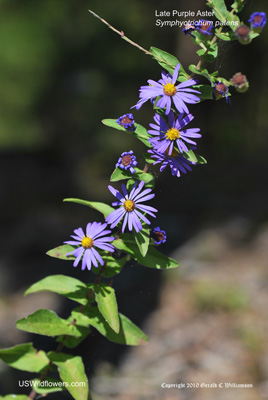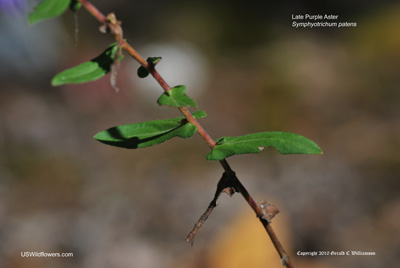Wildflowers of the United States | |||||||||||||
| |||||||||||||
Symphyotrichum patens - Late Purple Aster, Spreading Aster. Formerly classified as Aster patens. There are three varieties of Symphyotrichum patens - gracile, patens, and patentissimum. Var patens is the only one found in the northeastern states, var patentissimum isn't found in the coastal states. Some authorities do not recognize var gracile. The species is possibly extirpated in Maine; it is officially listed as Threatened in New Hampshire. | It is with some trepidation that I step into the arena of identifying Symphyotricum species. There are many very similar species in this large genus (90 species in the genus.) But this plant was so beautiful I wanted to give it a shot, so with the help of my trusty copy of Wildflowers Of Tennessee, The Ohio Valley and the Southern Appalachians and the Internet, I've given it a shot, and think this is likely Symphyotrichum patens - Late Purple Aster. It has too few ray flowers to be New England Aster. The pubescent purplish stem eliminates Smooth Aster. The entire leaves eliminate (in my mind) Purple-stemmed Aster. Since the leaves are not linear, this isn't Southern Prairie Aster. The leaves, in my opinion, encircle the stem too much for this to be Aromatic Aster (although I regret not crushing a leaf to check for an aroma.) Leave comments on Symphyotrichum patens at this link.   Blue=Native; Grey=Introduced Map from USDA Plants Database: USDA, NRCS. 2017. The PLANTS Database (http://plants.usda.gov, 16 Jan 2025). National Plant Data Team, Greensboro, NC 27401-4901 USA. Search Our Database: Enter any portion of the Scientific, Common Name, or both. Do a general Google search of the entire site: #ad
|
| #ad
| | |||||||||
|
Commercial / Cookie Notice Looking for Wildflowers for a specific state? Check here: | |||||||||||||
|
| |||||||||||||



